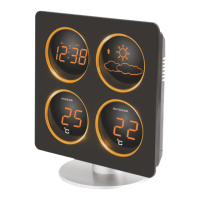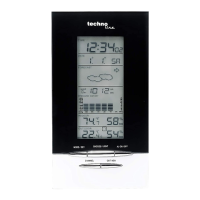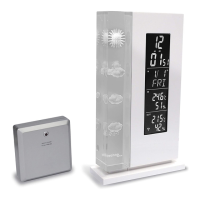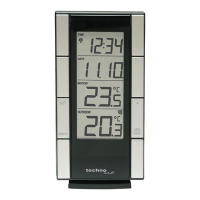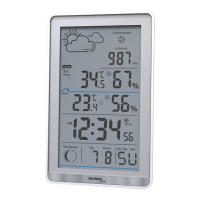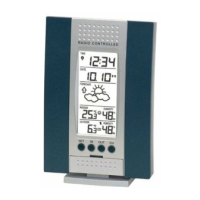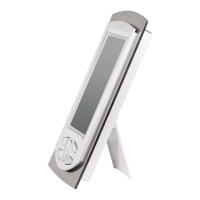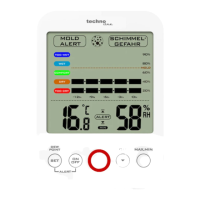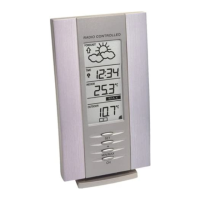ENVIRONMENTAL RECEPTION EFFECTS
The weather station obtains the accurate time and outdoor transmitter data with wireless technology.
Same as all wireless devices, the reception is maybe affected by the following circumstances:
x long transmitting distance
x nearby mountains and valleys
x near freeway, railway, airports, high voltage cable etc.
x near construction site
x among tall buildings
x inside concrete buildings
x near electrical appliances (computers, TV’s, etc) and metallic structures
x inside moving vehicles
Place the weather station at a location with optimal signal, i.e. close to a window and away from metal
surfaces or electrical appliances.
QUICK SETUP
Step 1 Plug in the AC/DC adaptor to any AC household outlet. Then plug in the power jack to the back
of the weather station.
Step 2 Slide open the battery cover at the back of the weather station and insert 3 x AAA batteries
(not included) into the battery compartment by observation the correct +/- polarity. Replace the battery
cover.
Step 3 Keep the weather station and outdoor transmitter next to each other. Slide opens the battery
cover at the back of the outdoor transmitter. Make sure the channel selector on the back of the
outdoor transmitter is set at position 1 (top position) and insert 2 x AAA batteries (not
included) into the battery compartment by observation the correct +/- polarity. Replace
the battery cover. The weather station will receive data signal from the outdoor
transmitter in few seconds.
Note: Only one outdoor transmitter is receivable by the weather station.
Keep in mind that the outdoor transmitter has a maximum open-area transmission of
100 meter with no obstructions. Actual transmission range will depend on any
obstruction in the path of the signal. Each obstruction (roof, walls, floors, ceilings, thick
trees, etc.) will effectively cut signal range in half.
Insert the holder to the bottom of the outdoor transmitter for desktop or insert it to the
back of the outdoor transmitter for wall mount purpose. Then place the outdoor
transmitter in a dry and shaded area outdoor.
Step 4 Peel off the protective label on the front of the weather station. Now the weather station is
ready to work.
After the weather station has received the outdoor temperature from outdoor transmitter, it will start to
search for the DCF-time-signal. This may take overnight. In case the weather station does not catch
the DCF-time-signal, set the clock manually.
During any reception of DCF-time-signal, the thermometer does not take temperature measurement. It
will change to low brightness and will resume to high brightness after reception of DCF-time-signal.
After first time installation, the temperature readings will get stable and become more accurate in
around 30 minutes.
Back-up batteries
When the power supply is not in use or interrupted, the weather station will be powered by the back-up
batteries. The LED display is turned off, but time and alarm time remain stored (also in the event of a
power failure). Also the alarm functions work as usual.
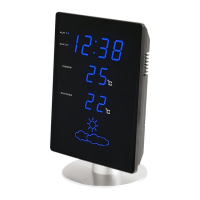
